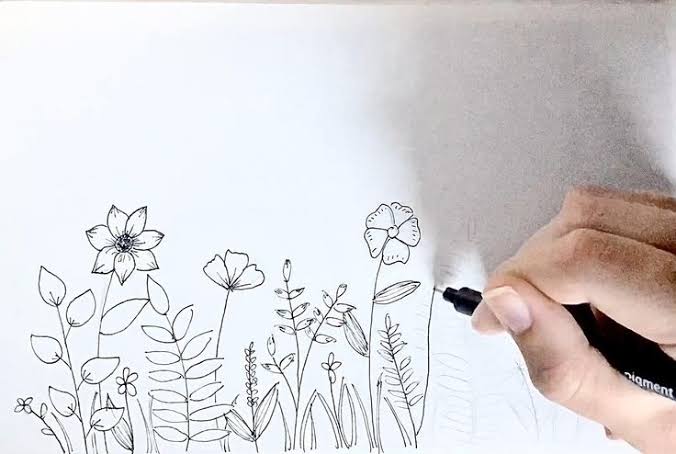Welcome to Doodles and Scribbles, where we delve into the fascinating world of casual marks and spontaneous art. Today, we’re exploring the intriguing difference between doodling and scribbling.
Though often used interchangeably, these two forms of expression have distinct characteristics and purposes. Let’s unravel the art in casual marks and understand what sets doodles apart from scribbles.
What Are Doodles?
Definition of Doodling
Doodling is the act of drawing or sketching spontaneously, without a specific purpose or goal. Doodles are often created while the mind is occupied with other activities, such as listening to a lecture, talking on the phone, or daydreaming.
Characteristics of Doodles
- Intentional Patterns: Doodles often contain recognizable shapes, patterns, or designs. These can range from geometric shapes to whimsical creatures.
- Mindful Engagement: While doodling might seem mindless, it often reflects a level of subconscious engagement with a particular thought or feeling.
- Repetitiveness: Many doodles feature repetitive patterns or motifs, indicating a calming or meditative state.
What Are Scribbles?
Definition of Scribbling
Scribbling, on the other hand, is a more chaotic and unstructured form of drawing. It often involves random, haphazard lines and marks made without much thought or intention. Scribbling is commonly associated with early childhood development but can be found in adults as well.
Characteristics of Scribbles
- Randomness: Scribbles are characterized by their lack of structure and randomness. They don’t form recognizable shapes or patterns.
- Expressive Freedom: Scribbling is a free-form expression of raw emotion or energy, often without a specific purpose.
- Developmental Significance: In children, scribbling is a crucial developmental stage that helps with motor skills and cognitive growth.
Psychological Impact of Doodling
Enhancing Focus and Memory
Research has shown that doodling can enhance focus and memory retention. When engaged in a monotonous task, doodling helps keep the brain active, preventing daydreaming and loss of concentration.
Reducing Stress and Anxiety
Doodling can also be a form of stress relief. The repetitive motion and creative expression help reduce anxiety and promote relaxation.
Role of Scribbling in Development
Early Childhood Development
For young children, scribbling is more than just random marks on paper. It is a vital part of their development, aiding in the growth of fine motor skills, hand-eye coordination, and early writing abilities.
Emotional Expression
Scribbling allows children to express their emotions freely. The chaotic nature of scribbles can be a way for them to release pent-up energy or frustration.
Artistic Value: Doodles vs. Scribbles
Doodles in Art
Doodles have found a place in the art world, with many artists using them as a form of creative expression. Famous artists like Pablo Picasso and Leonardo da Vinci were known to doodle, often using their spontaneous sketches as the foundation for more significant works.
Scribbles as Abstract Art
Scribbling, too, has its place in the art world, particularly in abstract art. The raw and unfiltered nature of scribbles can convey powerful emotions and ideas, making them a valuable form of artistic expression.
How to Encourage Doodling and Scribbling
For Adults
- Keep a Sketchbook: Carry a small sketchbook with you to doodle in during spare moments.
- Set Aside Time: Dedicate a few minutes each day to doodling or scribbling, allowing your mind to wander and relax.
- Use Different Mediums: Experiment with various tools like pens, pencils, markers, and even digital devices.
For Children
- Provide Materials: Give children access to a variety of drawing materials, such as crayons, markers, and paper.
- Create a Safe Space: Encourage scribbling and doodling without judgment, allowing children to explore their creativity.
- Join In: Draw alongside your children, showing them that doodling and scribbling are fun and valuable activities.
Steps to Differentiate Between Doodles and Scribbles
- Observe the Structure: Look for recognizable patterns or shapes. Doodles typically have some form of structure, while scribbles are more chaotic.
- Analyze the Intent: Consider the intention behind the marks. Doodles often reflect a subconscious engagement, whereas scribbles are more about free expression.
- Evaluate the Context: Think about the context in which the marks were made. Doodling usually occurs during other activities, while scribbling can be a standalone activity, especially for children.
Conclusion
In conclusion, while doodles and scribbles may seem similar at first glance, they serve different purposes and have distinct characteristics. Doodling is a mindful, often subconscious activity that enhances focus and creativity, while scribbling is a free-form expression of raw emotion and energy, crucial for early development. Both forms of casual marks hold artistic value and provide significant psychological benefits.






